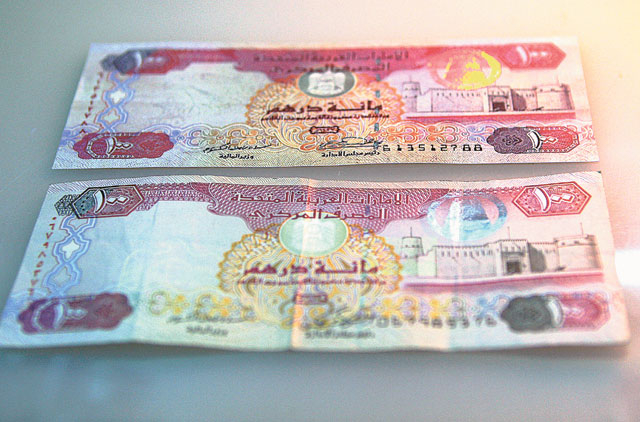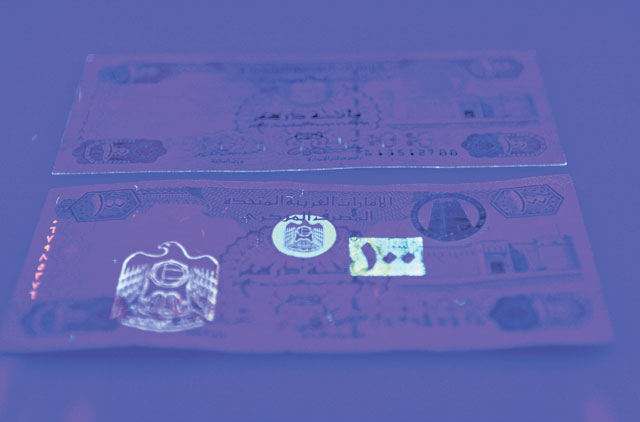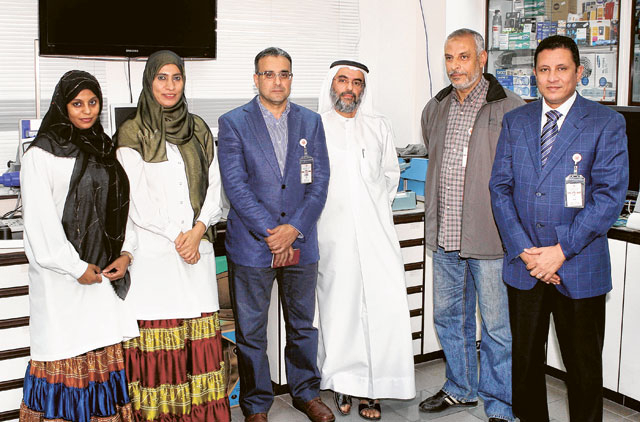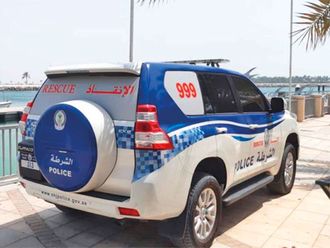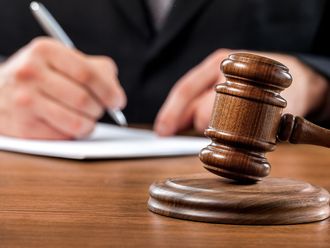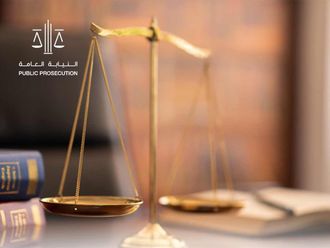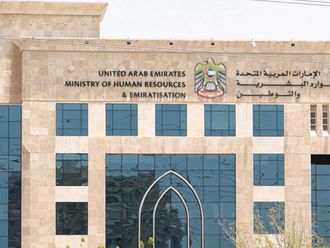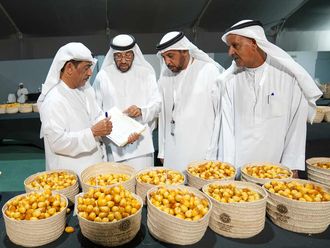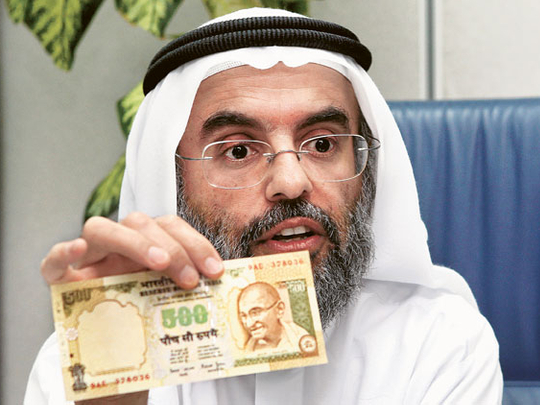
DUBAI: Counterfeiters are throwing up a huge challenge to authorities and money exchange houses by using increasingly sophisticated techniques to forge notes with most of the security features used in real currencies, forensic experts said.
In this cat and mouse game between cops and forgers, the Indian rupee has emerged as the currency of choice, overtaking the US dollar in 2011, accounting for 10,700 pieces — or 44 per cent — of the top five fake bank notes (24,000) of different countries seized by Dubai Police last year.
"These fakes look so real," said Aqil Al Najjar, head of the Questioned Documents Section, Department of Forensic Science and Criminology of the Dubai Police. "The counterfeiters have increased [so much] in sophistication that they have copied up to 85 per cent of the security features on currency notes, especially on the Indian rupee.
"It is difficult for a common man to detect them."
Police sleuths came across 191 cases of suspect currencies last year — or one case every two days. Although there were only 13 cases involving phoney Indian notes (against 71 cases involving US dollars), the Indian rupee topped in terms of the number of seized notes, which came in Rs500 and Rs1,000 denominations, and estimated face value of about Rs10 million (Dh2.72 million).
Despite a relentless police campaign, gangs continue to find a way to evade the law. Last week, police nabbed an Eastern European woman who presented phoney Rs35,000 worth of new Rs1,000 denomination notes to a Dubai money exchange, said Al Najjar.
Both the US dollar and the UAE dirhams were counterfeiters' favourite — with 71 cases each in 2011 (See box). The US dollar, however, came a close second to the Indian rupee with 9,000 pieces of fake $100 notes seized in Dubai in 2011. The US dollar accounted for an overwhelming majority of cases in 2010, with 90,000 fake notes seized in Dubai.
"The US dollar remains the favourite of international counterfeiting gangs, but Indian rupee counterfeiters are also posing a big challenge to authorities," said Al Najjar, who also teaches forensic document examination at the Dubai Police Academy. The UAE dirham came third with 7,500 pieces in 183 cases since 2010, followed by the Saudi riyal at fourth with nearly 6,900 notes in 21 cases. The euro completes the top five list, with more than 3,000 pieces of fake €50 (Dh243), €100, €200 and €500 notes in 16 cases over the last two years. Al Najjar's team said they had also come across counterfeit Bahraini dinars, Omani riyals, and Chinese yuan in Dubai.
"There are a lot of ‘Class A' fake Indian rupees going around," said Al Najjar, using forensic terminology to describe high quality counterfeit money.
While the amount of counterfeit Indian rupees is hard to determine, the Indian media estimates that counterfeit notes with a face value of Rs16 billion are already in circulation. A special cell of the Delhi police in India seized fake Indian rupees with a face value of Rs30.6 million in 210 cases in the last five years, news agency Press Trust of India reported last month.
The Reserve Bank of India (RBI), India's currency regulator, did not respond as of press time to XPRESS' specific questions about the magnitude of the problem. The RBI, however, acknowledged the counterfeiting problem and has a dedicated website showing the security features on all the new currency notes (see box on adjoining page).
The sheer volume of cases also indicates Dubai's rise as a global trading crossroads — and a magnet for counterfeiters, said Al Najjar. "We do find ourselves under tremendous pressure when a huge volume of suspect items need to be checked one by one," he said, explaining how his six-person team checked 81,700 documents — passports, visas, contracts, school credentials and handwriting — last year alone.
It's quite a demanding job. Forensics expert spend six years in training in addition to a basic four-year Bachelor of Science degree. "There are not so many young people interested in our line of work," said Mona Al Suwaidi, 37, an Emirati forensic document expert. She said part of their job involves frequent court appearances as expert witness.
To cast a wider net on fake currencies, experts have launched a training programme involving money exchange and bank staff, especially among those stationed at Dubai International Airport, which welcomed a record 51 million passengers in 2011.
Al Najjar said older US dollar notes are the "weakest" bank notes as far as security is concerned, but the latest editions are much harder to copy.
Last month, customs officers foiled an attempt to smuggle $804,000 (Dh2.9 million) worth of fake $100 notes. The carrier, a European on a tourist visa, was held at Terminal 3 of the Dubai airport. While counterfeiting is a global phenomenon, Fayez Abdul Monem, a forensic document expert, believes counterfeit currencies come from a few sources. "The pattern on the end product suggests there are a few criminal gangs outside the UAE printing these fake notes."
Dubai Police have also unmasked a new technique called "partial currency" which involves dividing the original note into two parts. The counterfeiter slices the real note into two faces, attaching one side of a real currency note with a fake one on the back.
Two-faced notes
When used to make a purchase, the buyer hides the counterfeit face and shows only the real face, which illuminates under UV light, used by most exchanges and shops to curb counterfeiting.
"This new technique which emerged last year takes so much painstaking work by criminals. Without keen attention, the person taking the money could miss the fake side, specially if the note is folded and only the authentic face is presented."
He said partial fakes have higher acceptability as they evade detection, adding that cases of fake currency rise during shopping festivals.
"People should not worry or fear getting in trouble when they report fake currencies to police. If there is a crime going on, we would not know immediately unless the community cooperates and tells us." said the official.
Ways to detect a fake rupee
1 See through register: The floral designs in the middle of the vertical band next to the watermark window have the denominational numeral 1000. Both the printed portions have an accurate back to back registration so that the numeral appears as one when seen against the light.
2 watermark: Hidden portrait of Mahatma Gandhi, the multidirectional lines and an electrotype mark showing the numeral ‘1000' appear in this section. It can be seen better when viewed against the light.
3 optically variable ink: The colour of the numeral ‘1000' appears green when the banknote is held flat, but changes to blue when tilted to an angle.
4 fluorescence: The banknote series, number panel, security thread and few particles (scattered in a note) will glow when exposed to ultraviolet light.
5 Security Thread: It will have ‘‘bharat", ‘RBI' and ‘1000' inscriptions and the thread will change from green to blue when viewed from different angles. The thread is visible as a continuous line from behind when viewed against the light.
6 Intaglio Printing: The portrait of Mahatma Gandhi, the Reserve Bank seal and ‘ek hazaar rupiye' are printed in the intaglio (raised ink), which can be felt by touch.
7 Latent image: The vertical band on the extreme right of the banknote contains a latent (hidden) image of the numeral ‘1000', which can be seen when the note is held at eye level.
8 micro lettering: The letters ‘RBI' & ‘1000' can be viewed with the help of a magnifying glass in the zone between Mahatma Gandhi portrait and the vertical band.
9 identification mark: Diamond with intaglio print which can be felt by touch, helps the visually impaired to identify the denomination.
10 year of printing: Year of printing appears on the reverse of the banknote.
11 see through register: The floral designs printed on the front and back fit into one another and appear as one when seen against the light.
What to do
Help the authorities when you know or suspect you were given fake currency.
Report to the police station
Call Al Ameen service (BBM: 21DDDBB0; SMS: +971 50 1894444; email: alameen@eim.ae; Toll free: + 971 800 4888)


